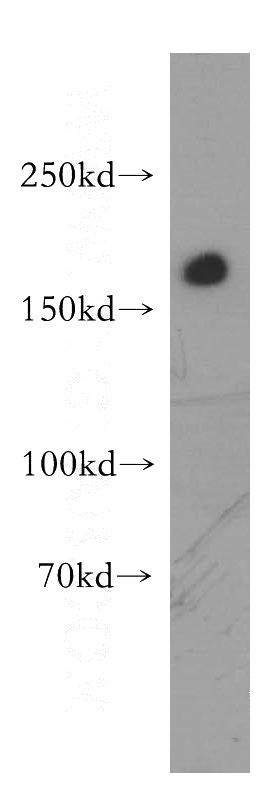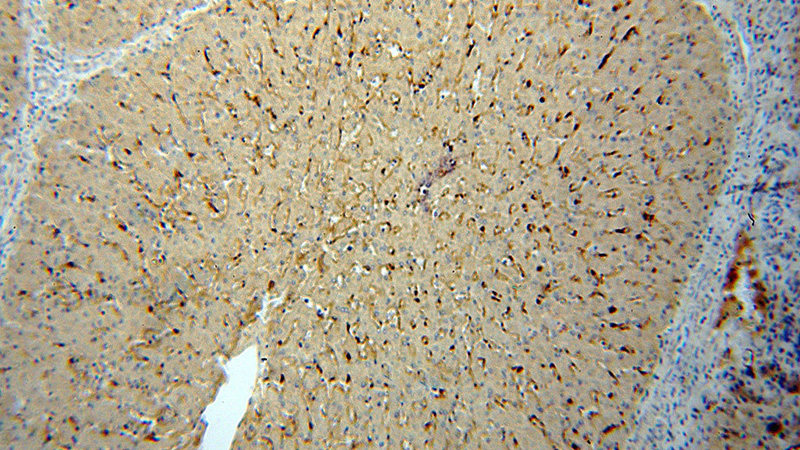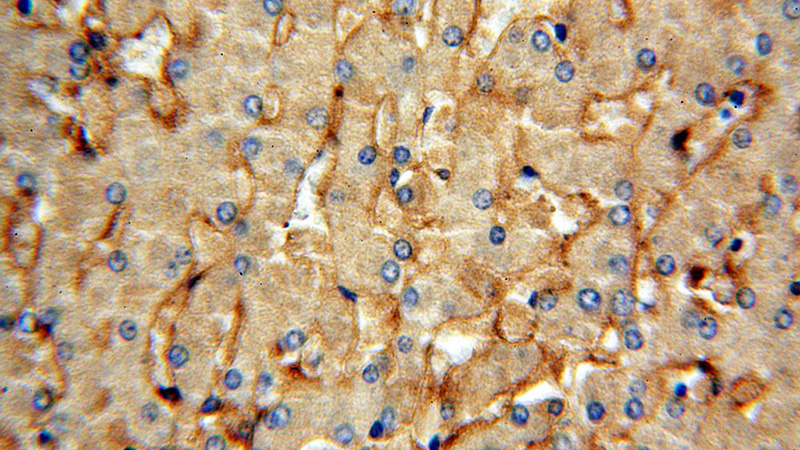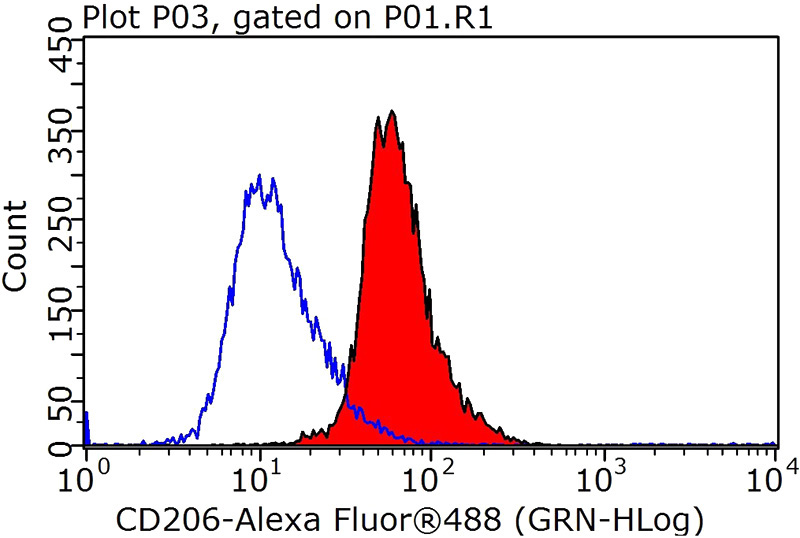-
Product Name
CD206 antibody
- Documents
-
Description
CD206 Rabbit Polyclonal antibody. Positive IHC detected in human liver tissue. Positive FC detected in RAW 264.7 cells. Positive WB detected in human kidney tissue, HepG2 cells. Observed molecular weight by Western-blot: 165-170 kDa, 70 kDa
-
Tested applications
ELISA, WB, IHC, FC
-
Species reactivity
Human, Mouse; other species not tested.
-
Alternative names
CD206 antibody; CLEC13D antibody; Macrophage mannose receptor 1 antibody; Mannose receptor antibody; mannose receptor antibody; C type 1 antibody; MMR antibody; MRC1 antibody
-
Isotype
Rabbit IgG
-
Preparation
This antibody was obtained by immunization of Peptide (Accession Number: NM_002438). Purification method: Antigen affinity purified.
-
Clonality
Polyclonal
-
Formulation
PBS with 0.02% sodium azide and 50% glycerol pH 7.3.
-
Storage instructions
Store at -20℃. DO NOT ALIQUOT
-
Applications
Recommended Dilution:
WB: 1:200-1:2000
IHC: 1:20-1:200
-
Validations

human kidney tissue were subjected to SDS PAGE followed by western blot with Catalog No:109006(MRC1 antibody) at dilution of 1:500

Immunohistochemical of paraffin-embedded human liver using Catalog No:109006(MRC1 antibody) at dilution of 1:100 (under 10x lens)

Immunohistochemical of paraffin-embedded human liver using Catalog No:109006(MRC1 antibody) at dilution of 1:100 (under 40x lens)

1X10^6 RAW 264.7 cells were stained with 0.2ug MRC1 antibody (Catalog No:109006, red) and control antibody (blue). Fixed with 90% MeOH blocked with 3% BSA (30 min). Alexa Fluor 488-congugated AffiniPure Goat Anti-Rabbit IgG(H+L) with dilution 1:1000.
-
Background
CD206, also named as MMR, CLEC13D and MRC1, is a type I membrane receptor that mediates the endocytosis of glycoproteins by macrophages. CD206 has been shown to bind high-mannose structures on the surface of potentially pathogenic viruses, bacteria, and fungi so that they can be neutralized by phagocytic engulfment. CD206 is a 170 kDa transmembrane protein which contains 5 domains: an amino-terminal cysteine-rich region, a fibronectin type II repeat, a series of eight tandem lectin-like carbohydrate recognition domains (responsible for the recognition of mannose and fucose), a transmembrane domain, and an intracellular carboxy-terminal tail. It is expressed on most tissue macrophages, in vitro derived dendritic cells, lymphatic and sinusoidal endothelia. This antibody recognizes the intracellular carboxy-terminal part of CD206 and MRC1L1.
-
References
- Ludwig T, Worsch S, Heikenwalder M, Daniel H, Hauner H, Bader BL. Metabolic and immunomodulatory effects of n-3 fatty acids are different in mesenteric and epididymal adipose tissue of diet-induced obese mice. American journal of physiology. Endocrinology and metabolism. 304(11):E1140-56. 2013.
- Kempf W, Zollinger T, Sachs M. Granulomas are a source of interleukin-33 expression in pulmonary and extrapulmonary sarcoidosis. Human pathology. 45(11):2202-10. 2014.
- Gao S, Zhou J, Liu N. Curcumin induces M2 macrophage polarization by secretion IL-4 and/or IL-13. Journal of molecular and cellular cardiology. 85:131-9. 2015.
Related Products / Services
Please note: All products are "FOR RESEARCH USE ONLY AND ARE NOT INTENDED FOR DIAGNOSTIC OR THERAPEUTIC USE"
